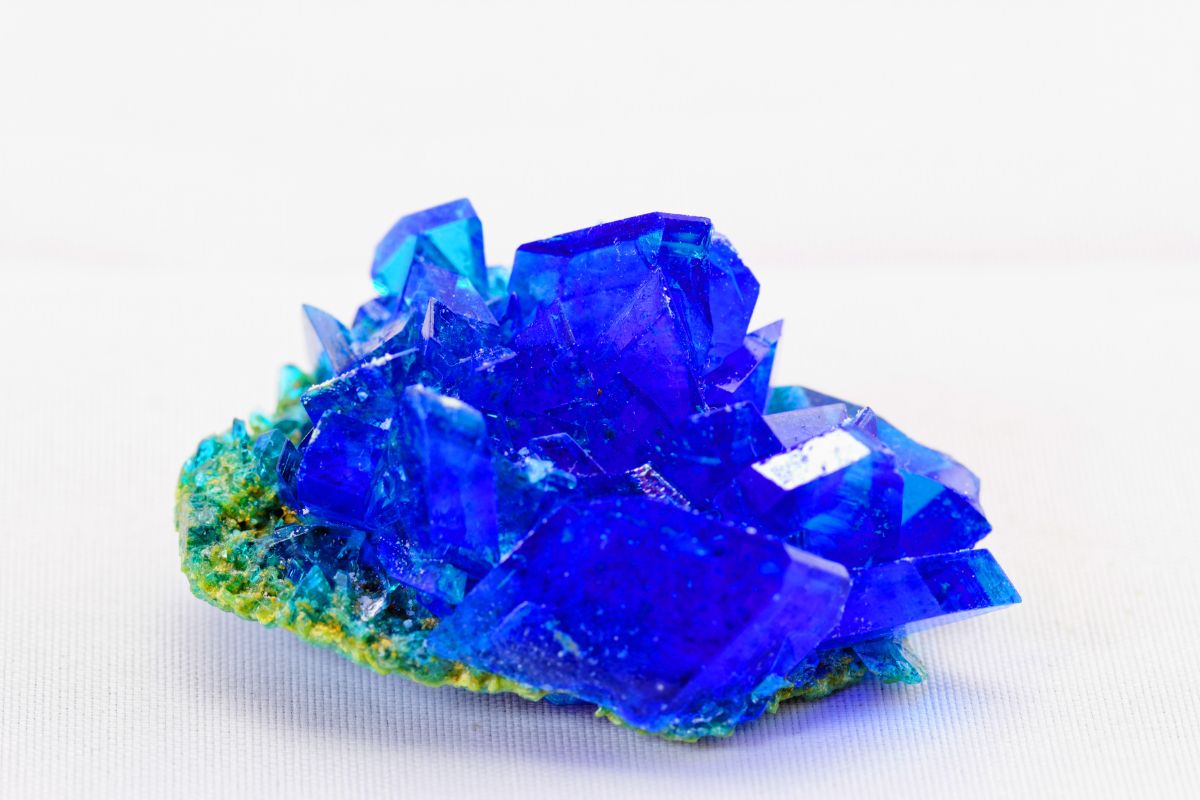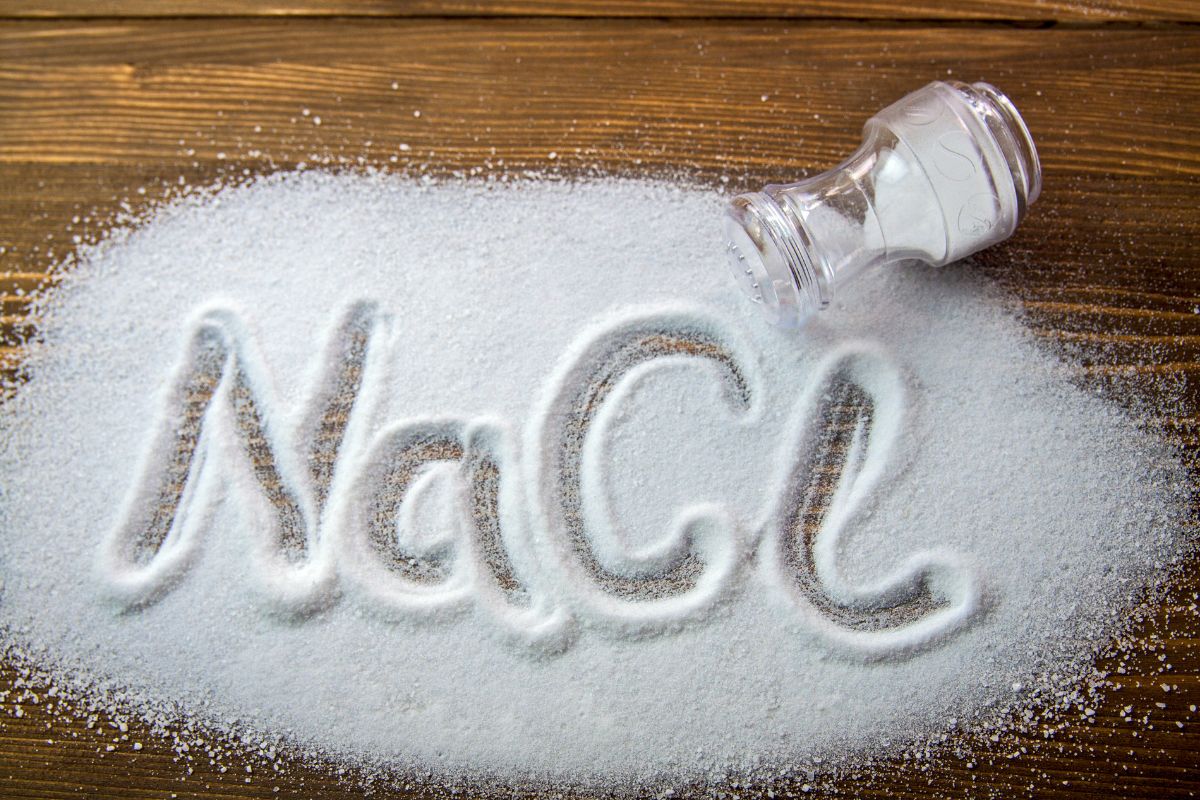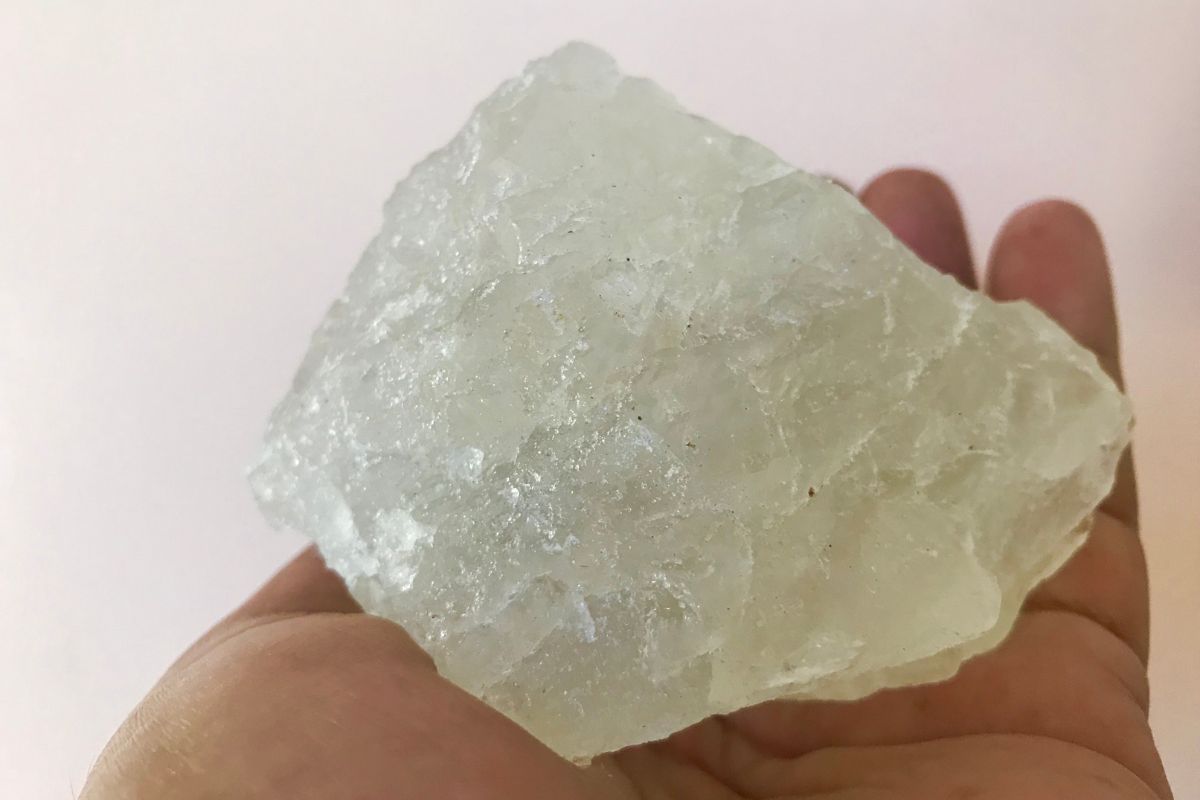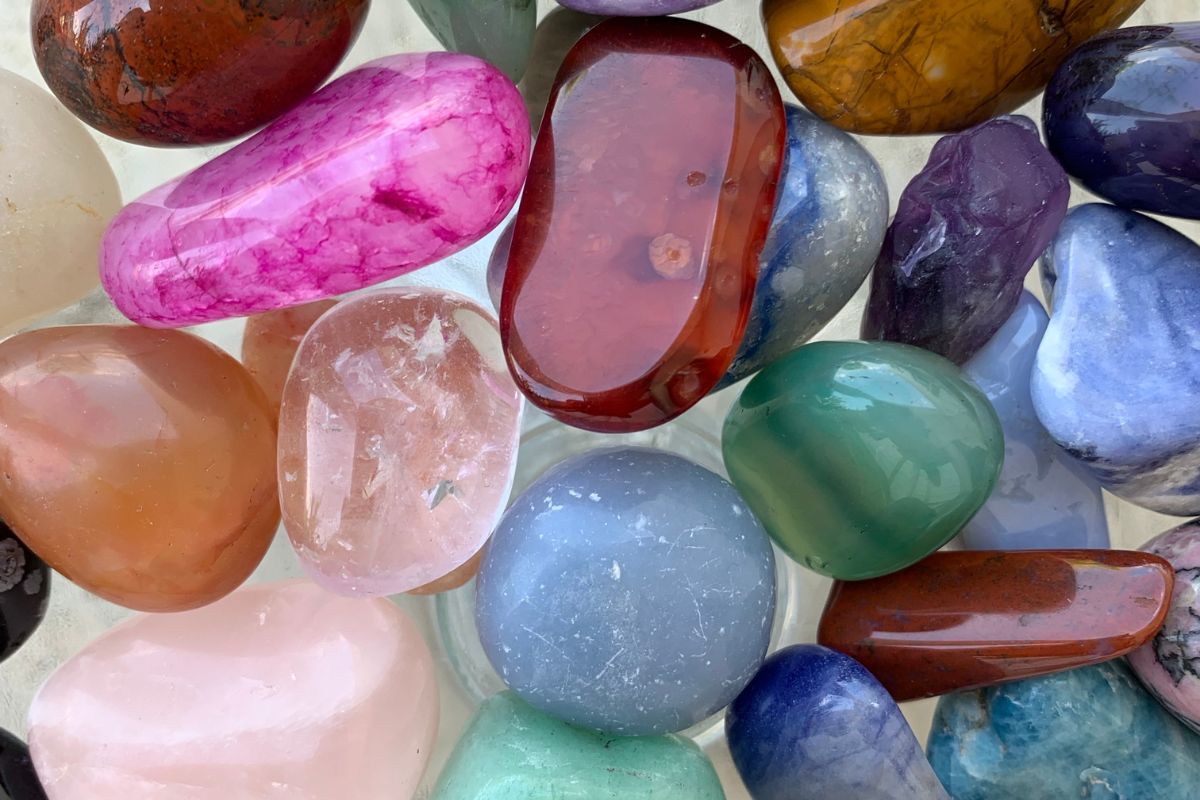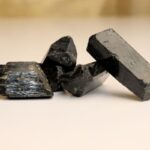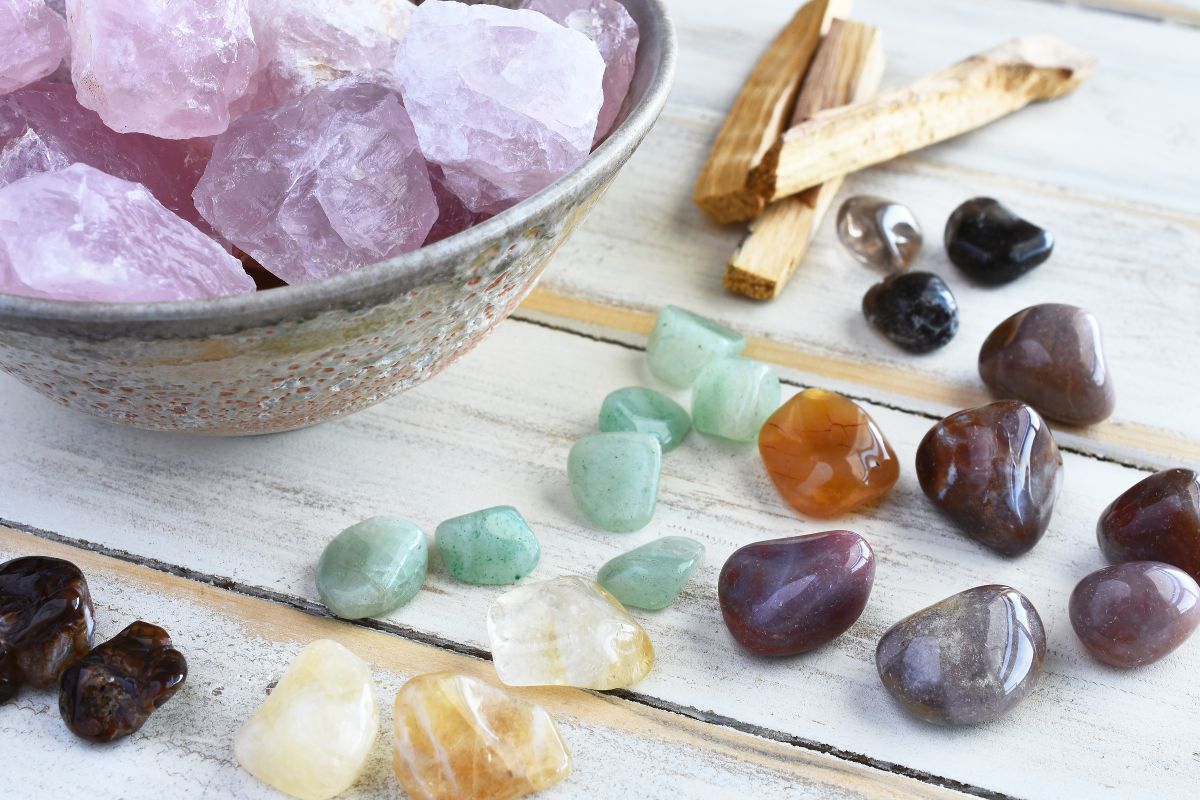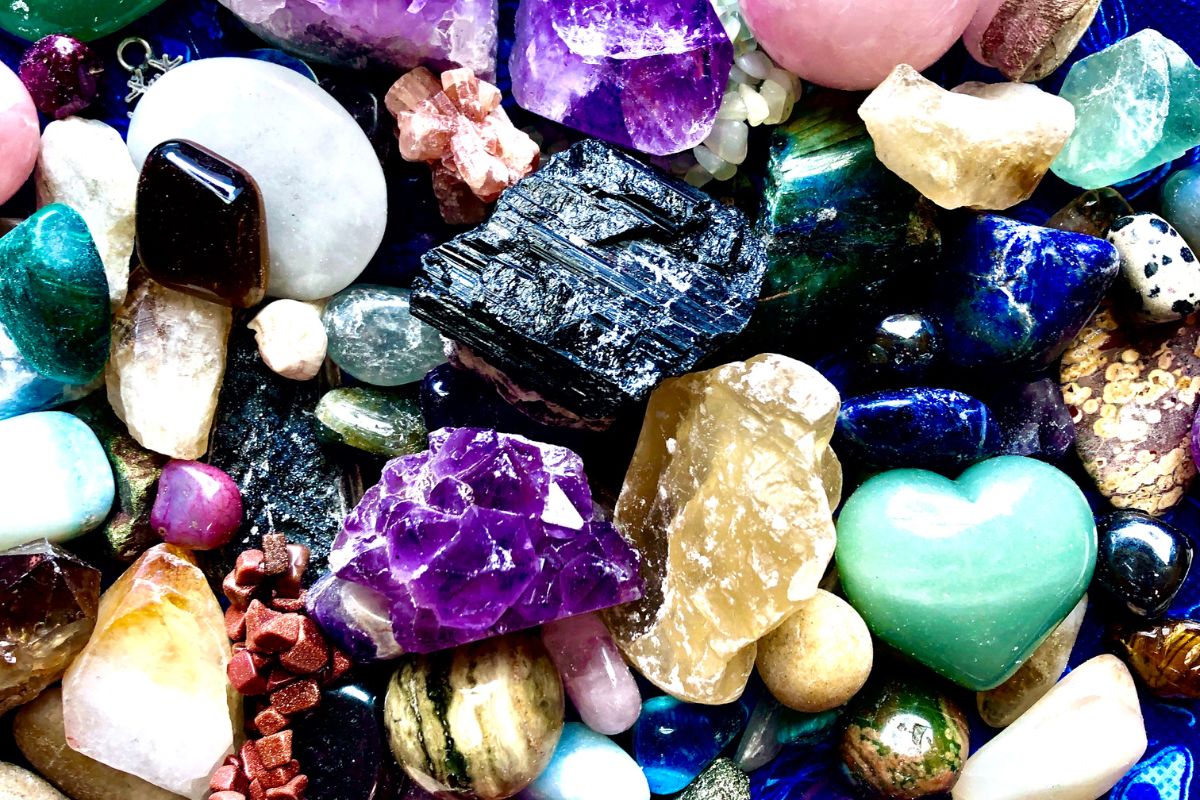Sugar crystals are transparent stones that look elegant and lovely in any setting. And you can make them at home today!
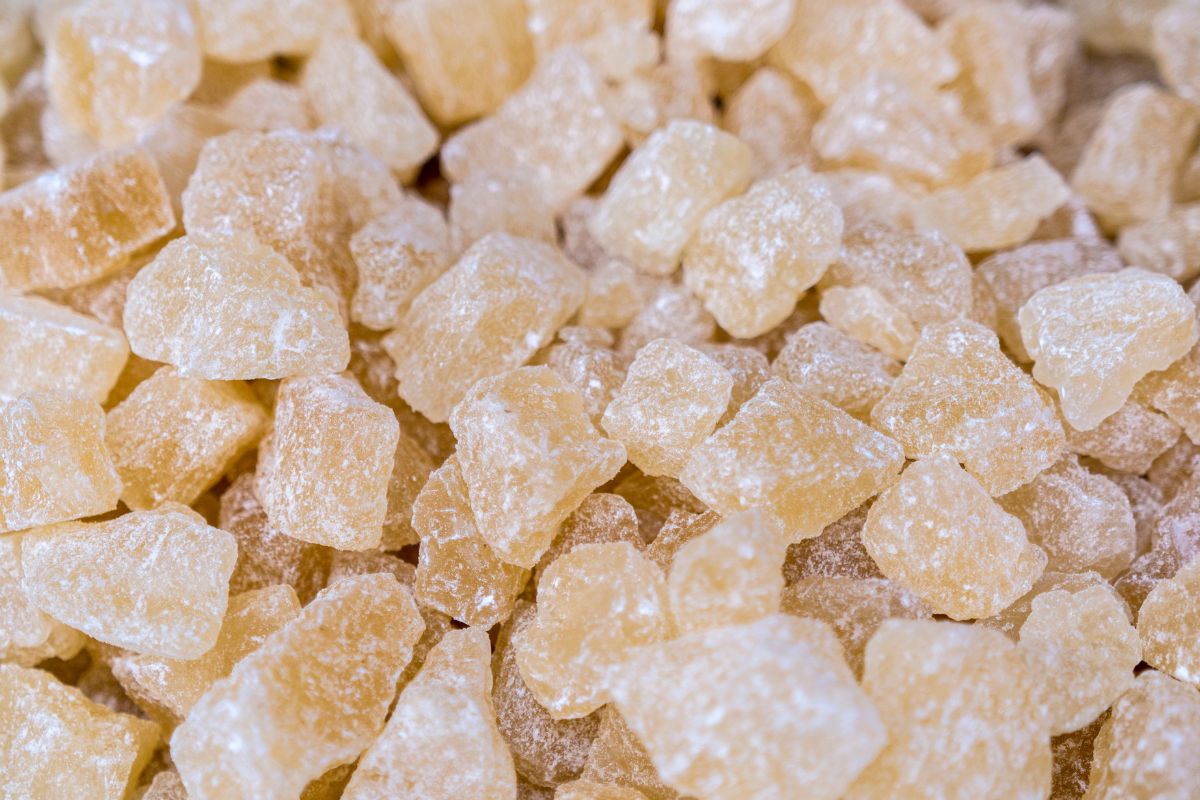
Growing your own crystals is very therapeutic and enjoyable – there’s nothing we enjoy more than watching our crystals grow each day!
Crystals can be grown from a number of ingredients, such as salt, fertilizer, and more.
In theory, making crystals from sugar is simple – hot water dissolves more sugar than cold water. Once the water cools, the excess sugar needs to come out. This forms the crystals.
Today we’re looking at how to make crystals from sugar. We’ll look at how to make candy crystals, chunky sugar crystals, and more. What are we waiting for? Let’s get right into it.
What Are Crystals?
Crystals are solid materials that have been built from atoms or ions arranged in a particular way. They have developed crystal faces, and are created from atoms in regular patterns.
Crystals need to be charge-balanced, meaning that the amount of negative charge must be compensated with the same amount of positive charge.
Crystals are used for a number of things. Some simply like the look of them and therefore enjoy displaying them around their home. Others use crystals for their healing properties.
Many ancient cultures, such as Greece, Egypt, and China, believed that crystals had healing properties for physical and mental ailments.
This ethos has been carried down through the years, with people claiming that crystals can promote good energy flow and remove negative energy in a space.
Is There Any Evidence To Support The Use Of Healing Crystals?
No, there is no scientific evidence that can support the use of crystals in a healing capacity. However, thousands of people use their crystals every day and claim their benefits.
Scientists are unsure of whether this is due to the use of crystals themselves, or simply the placebo effect in motion.
When people believe that something is helping them, they might fall victim to a placebo effect.
This is where the user believes that the crystal will help their health, so their health improves. It is an interesting theory that is often used in medical trials.
No matter whether or not the use of crystals sets off a placebo effect or not, the fact that crystals do help the user makes them popular across the world.
What Are Sugar Crystals?
Sugar crystals are sweets and are unlike normal crystals.
You cannot leave sugar crystals out in your home without attracting pests. Sugar crystals are best used for satisfying a sweet tooth, making your own candy at home, or making little gifts for friends and family.
In their simplest form, sugar crystals are clumps of sugar (otherwise known as rock candy) that form through the use of sugar-saturated water.
They are transparent and often come in a hexagonal shape since this is what the molecular shape of sugar is. Cool, right?
Growing Your Own Sugar Crystals
Before we get into what you can do with sugar crystals and how to make variations of them, you’ll need to know the basics of growing them. Here is a list of materials you need for sugar crystals that you can use time and time again.
(All of the variations of sugar crystals need these ingredients, so make sure you have them to hand!).
Materials Needed
- 6 cups of sugar
- 2 cups of water
- A large pot
- A spoon
- A large jar
- Wooden skewers
- Nylon fishing line
- A flat dish
Option One: Sugar Crystal Rock Candy
This is a super easy experiment to start with – even kids could try it! You’ll be left with a sugary snack on a stick, and what sounds better than that? If you want to begin with the basics, then we recommend starting with rock candy.
Pour your white sugar into a pot. You can use fine or coarse sugar, although the former works better as it dissolves quicker in the water.
Use 3 cups of sugar for every 1 cup of water. We use 6 cups of sugar and 2 cups of water. Put a lid on your pot and heat the water until all sugar is dissolved. Stir the solution occasionally to quicken this process.
Wait for the water to become clear again – this is how you’ll know that the sugar has completely dissolved within the water. It shouldn’t take longer than 10 minutes for this to happen.
Once you’ve noticed the water becoming clearer again, remove it from the heat immediately. This stops the sugar from caramelizing, which is not what you want.
Cover the pot again and wait for the sugar solution to cool in the original pot. It’s incredibly important to keep a pot covering the water so that the sugar doesn’t crust on the surface.
Wait until the water reaches room temperature.
Once the solution has completely cooled, pour it into a large glass jar.
If you want to create colored sugar crystals, now is the time to add food coloring. You can also add flavoring if you wish. Add a few drops and mix gently with a spoon to get even coverage.
Dip your wooden skewer into the mixture. When you take it out, sprinkle some grains of sugar onto the skewer until it is coated evenly.
What Are Sugar Grains?
Sugar grains are what we use in baking, our coffee, and other meals to sweeten them. Grains of sugar are simply miniature sugar crystals.
As you sprinkle them onto your coated wooden skewers, they will act as seeds for your bigger sugar crystals on the skewer.
Once the skewer has been coated with grains, dip it back into the sugar solution and leave it there.
You’ll need to get creative with how you suspend the skewer in the jar, as you need to keep the tip at least one inch away from the bottom.
Our favorite methods of this are using clips to balance the skewer or cardboard with holes poked through it. You might have a much better idea, so go with whatever you think is best!
Leave the solution overnight. The next day, you should see a layer of crystals forming along the skewer. However, they might still be small, so you can leave them for a few more days to give them a chance to grow.
Ours were substantial in size by the third day, so it was time to take them out!
Remove the skewers from the solution and soak up any leftover sugar with a paper towel. Wipe them dry before enjoying your rock candy! How simple was that?
Option Two: Chunky Sugar Crystals
Rock candy is cute and fun to experiment with, but the final results are often rather small crystals. If you want to make some bigger crystals, this is the option for you.
The end result of these crystals is amazing. They look natural and beautiful and would look amazing anywhere in your house. Guests will hardly believe you made them with just sugar and water!
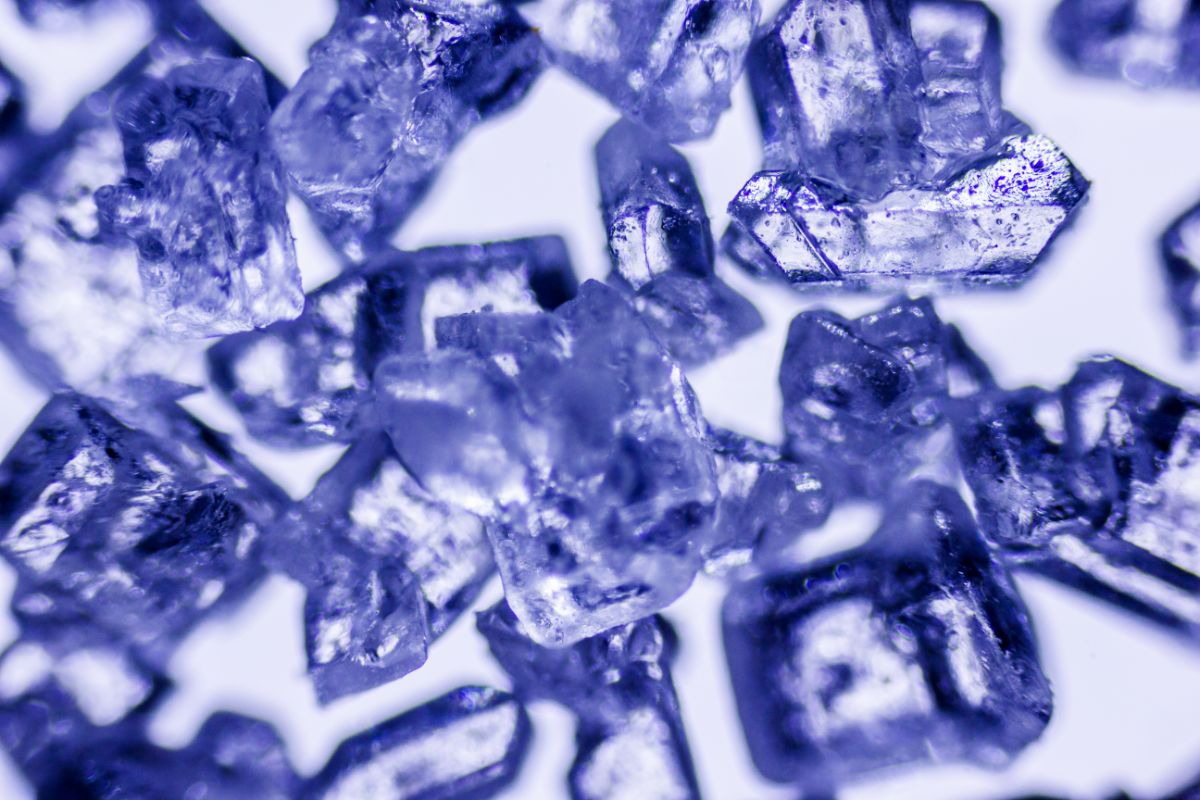
To start, prepare your sugar solution using the method above from the rock candy option. Once cooled to room temperature, pour 50 ml of it into a flat dish. Save the rest in a jar for later.
Cut 20cm of nylon fishing line and tape one side of it onto a wooden skewer. Place the other end into the sugar solution.
Sprinkle some sugar grains into the dish.
The thought process behind the fishing line is that the crystals will hopefully stick to it. However, you don’t need the entire fishing line to be covered in sugar grains (like when making rock candy).
Instead, you just need one or two grains to stick to the fishing line.
Leave the dish overnight. You should see a tiny crystal forming on the fishing line at first check-in.
Remove the fishing line from the flat dish and suspend the tiny crystals in the jar of sugar solution you saved from the previous day. Cover the top of the jar with plastic wrap – this prevents sugar crust from forming at the top of the jar.
Place your jar somewhere out of the sun and wait patiently for your crystal to grow! You can wait for as long as you need to, but our crystal was chunky enough after one week of growing.
As the sugar crystal grows, you might see some wavy lines coming from it into the sugar solution.
These look like heat waves, and they’re normal. It is simply confirmation that the sugar from the solution is being deposited onto the crystal.
Once you’re happy with the size of your crystal, remove it from the solution and dry it with a paper towel. Now all that’s left to do is admire your chunky crystal!
Option Three: Transparent Single Gemstones
Once you’ve mastered making sugar crystals from the methods listed above, it’s time to take things one step further.
Option 2 saw us make clusters of chunky crystals on a fishing line. However, if you’re lucky, you might find that a single perfect crystal is forming on the fishing line instead.
If you follow the steps listed above, this single crystal should grow into a large, transparent crystal separate from all others.
These look amazing. However, it is more likely that you’ll get a bunch of crystals growing together as seen in Option 2.
You might have noticed small single crystals forming on the bottom of your container. Why can’t you remove one of these, tie it to some string, and suspend it in the solution to watch it grow larger?
While this is a common method of growing other crystals, it will not work with sugar crystals. Since the sugar solution is so saturated, the small crystals are so fragile. So much as touching one will break it, leaving you with crystal dust.
So, is there another way to grow a single sugar crystal that doesn’t solely rely on luck?
A More Reliable Method Of Growing Single Sugar Crystals
Again, you’ll need your sugar solution ready to go, so make this from our method of making rock crystals.
However, don’t sprinkle any sugar grains into the solution. Just sit the jar of solution somewhere shady and quiet, and let it do its thing.
Seriously – put it in the basement or inside a drawer, and don’t disturb it too much.
You don’t need to cover the jar with a lid but keep it away from airflow. This will cause a crust to form on the top, which we don’t want. Keep it away from open windows or fans.
This option is by far the most time-consuming, but the results are worth it! Eventually, you should begin to see tiny hexagons of crystals forming on the surface of the solution. This can take around one week.
Once the single crystal begins forming on top of the solution, use a spoon to scoop up some of the solution and gently pour it on top of the crystal. This will make it float to the bottom of the jar.
Remember not to touch the crystal with your hands so you don’t break it (see also, ‘Why do Crystals Break?‘)!
We need to get the sugar crystal onto the bottom of the jar as when they grow on the surface of the solution, most end up with hollow cavities that don’t look very nice.
Once you’ve got it to the bottom of the jar, put the lid on it so that the jar is completely sealed.
Since your crystal is growing on its own with no other crystals around it, it should grow much quicker than the alternatives in options 1 and 2.
Leave the crystal in the solution for as long as you want. One week will leave you with a small single crystal, while one month will leave you with a much bigger transparent crystal.
You might find that, during this time, other single crystals begin to form.
As long as they don’t interfere with the growth of your original crystal, you can leave them to grow as well and end the process with more than one single crystal!
When you’re happy with their growth, take them out of the solution and dry them with a paper towel. Aren’t they pretty?!
Troubleshooting Tips
It is simple enough to grow your own sugar crystals. However, when you’re first starting out, you might find that you run into a few issues.
Luckily, we’re here to help troubleshoot some of the most common issues we have found ourselves in while making sugar crystals.
Sugar Dust Formed In The Water… Why?
Sugar dust, otherwise known as crystal dust, is a fine powdery substance that occurs when making sugar crystals incorrectly. It could be that you touched the crystal and it broke into lots of little pieces, or you might have shaken the jar.
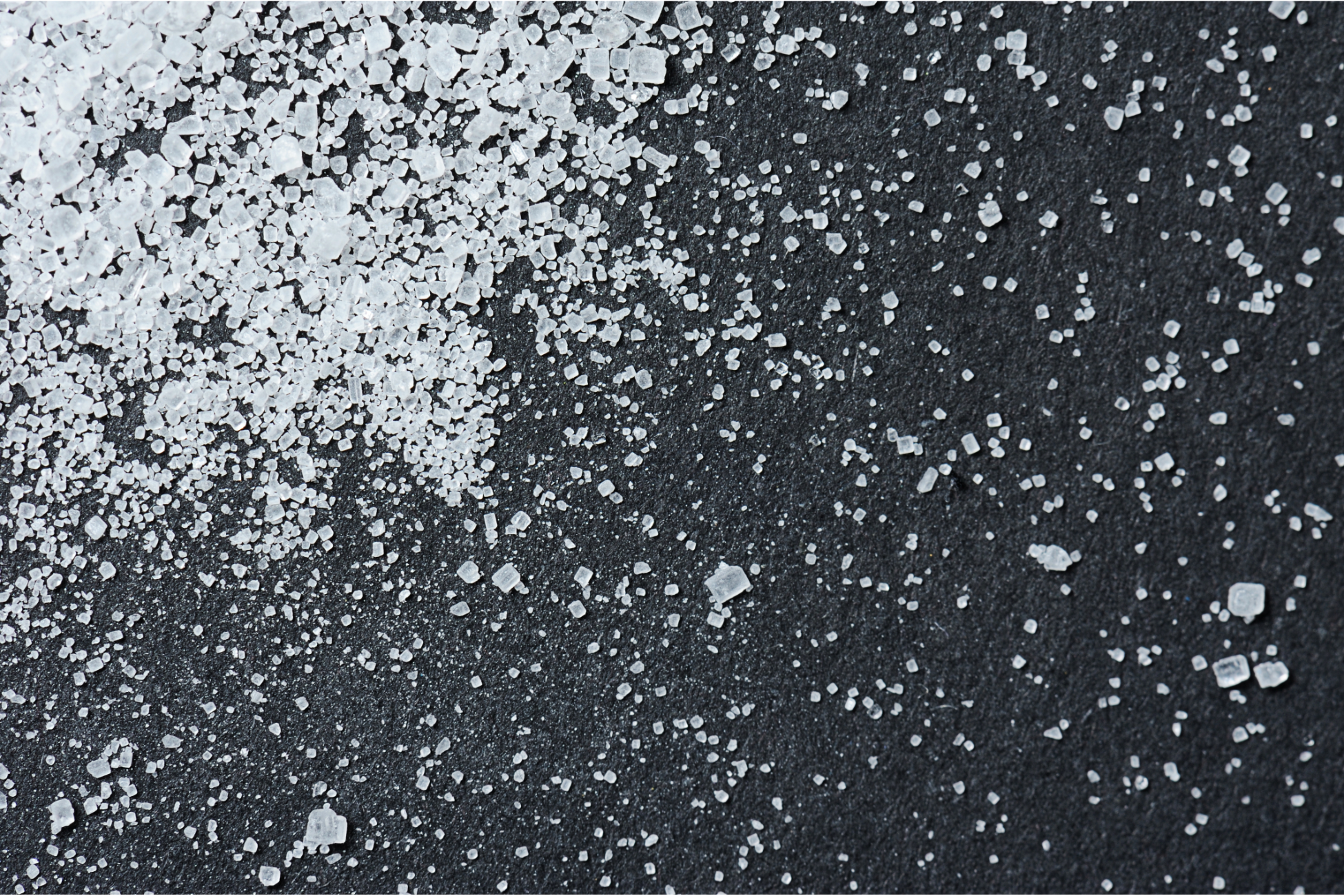
Remember that as they’re forming, sugar crystals are incredibly fragile!
Sugar dust can be made very easily, and breaking your crystals can interfere with how they’re growing. That’s why we often recommend that you don’t touch your crystals as much as possible.
If dust has formed in your solution, you can heat it back up to get rid of the sugar dust. Leave it to cool down completely and start the process again.
A Layer Of Sugar Crust Formed On Top Of The Solution!
Sugar crust is a common issue that arises when the solution evaporates too quickly in an environment not optimized for growing sugar crystals.
This environment often happens due to excessive air movement.
While sugar crust isn’t necessarily a terrible issue, it can stunt the growth of your crystals and make it difficult for you to get them out of the solution.
The fiddliness of it might even cause you to break your crystals into sugar dust.
To prevent the sugar crust from forming, either keep your solution in a perfect environment without any airflow (inside a drawer or in a basement), or partially cover the opening.
Do this with plastic wrap, the jar’s lid, or foil.
The Crystals Are Growing Super Slowly, Or Not At All
If you have followed the instructions above, then your crystals should be growing. It does take time for sugar crystals to grow, so make sure you wait patiently and give them enough time to work their magic.
Remember that crystals that grow slower are often clearer and of higher quality than those that grow rapidly. Good things take time!
Still, if you need your crystals to grow quicker, all you need to do is make the water more sugar-saturated. At the start of this article, we said you’d need a ratio of sugar to water at 3:1.
For rapid-growing crystals, increase this to 3.5:1. That’s 7 cups of sugar to 2 cups of water.
Other Crystals You Can Grow At Home
There are plenty of other crystals that you can grow at home other than sugar crystals. Let’s take a look at some of our favorites that are both beginner-friendly and beautiful.
Salt Crystals
Materials Needed
- 500ml warm water
- Bowl
- Spoon
- Jar
- Piece of string and a pencil
- Food coloring (optional)
Making Salt Crystals
Pour your 500ml boiling water into the bowl and stir in one large spoonful of salt.
Continue stirring until the salt has completely dissolved. You’ll know this has happened when you cannot see or feel any grains in the water.
Continue stirring spoonfuls of salt into the water until no more salt will dissolve. This is called saturated solution and means that there are not enough free water particles left to hold any more salt.
Pour a small amount of solution onto your plate and leave somewhere warm and sunny.
After a few days, your crystals should begin growing. If you want to make colored salt crystals, add some food coloring to the solution. (This will make your seed crystal).
Pour the rest of the solution into a jar and allow it to cool to room temperature.
Hang your seed crystal from the pencil and string and suspend in the jar of supersaturated solution.
Cover the jar loosely and set in an undisturbed location. Leave for a few days or weeks and watch your salt crystals grow larger and larger.
Alum Crystals
Materials Needed
- Alum
- Water
- Pan
- Shallow plate
- Jar
- String
Making Alum Crystals
Just like the other crystals we’ve looked at making, you will first need to start by making a supersaturated solution of alum. Continue adding alum to boiling water in a pan until no more will dissolve.
While this depends on the amount of water and its temperature, you can expect to use around 15g or 25 ml of alum.
Pour some of your saturated solution into a dish and leave in a dark and undisturbed place overnight. You should see this form seed crystals once the solution begins to evaporate.
Choose your favorite seed crystal and tie your string around it. You shouldn’t touch the crystal with your hands if you can help it, so use tweezers instead while doing this.
Suspend the crystal in your jar of room temperature saturated solution. Check the growth of your crystal everyday.
If you want to keep growing your crystal larger but find that it stops growing, you’ll need to make a new saturated solution and move the crystal to the new jar.
Once it’s the size you want, take it out and try it on a paper towel. Simple!
Frequently Asked Questions
Still have questions about making your own sugar crystals that we haven’t answered yet?
Hopefully, this section will offer you some insight into those burning questions so that you can get on with making your own crystals quicker!
Can You Use Any Type Of Sugar?
There is plenty of variation within the sugar market, from cane sugar to brown sugar, fine to chunky.
You might not know, however, that granulated, caster, and icing sugar are all the same – just milled to different particle sizes.
These sugars are good for crystal growth since they’re white and pure.
On the other hand, cane and brown sugar are less refined.
This means that they’re more natural, but making crystals from them will cause the end result to either be yellow or brown. If this is what you’re going for, then go for it!
You can use any sugar that mainly consists of sucrose. For this reason, you can even use maple syrup! However, don’t use sugars like honey that contain fructose and glucose rather than sucrose.
Are Sugar Crystals Stable?
Yes, sugar crystals are stable enough to keep around your home. However, it is important to remember that they are made from sugar, and you risk having pests infiltrate your home if you keep them out for too long.
Sugar crystals dissolve in water, so if you have a particularly humid environment, you might find them beginning to dissolve. This can lead to a very sticky and unpleasant cleanup.
So, while sugar crystals are stable and suitable for displaying around the house, we think that they’re much better suited as gifts or sweet snacks to wow your friends and family with.
Can Sugar Crystals Be Used For Making Jewelry?
No, you should not use sugar crystals to make jewelry. While other crystals look amazing when used for jewelry (and we’re sure that transparent sugar crystals would too!) it’s just not practical to use this kind of crystal.
Sugar crystals dissolve in water, so wearing them would be fun for only a few hours at most. Then you’d have a very sticky situation on your hands.
You could always cure the sugar crystal in epoxy if you really wanted to use it for jewelry, but the effect would take away from the transparency of the crystal – something that is highly desired in the first place.
We would stick to making jewelry from other types of crystals and leaving sugar crystals for more short term enjoyment.
Can You Turn Any Chemical Into Crystals?
There are many different substances that you can use to make crystals, many of which you can find at home. If you’re just starting out in the world of growing crystals, we suggest the following chemicals:
- Sugar
- Salt
- Epsom salt
- Alum
- Baking soda
- Copper sulfate
- Potassium ferricyanide
These can all be made with the same method of creating a supersaturated solution, forming a seed crystal in a shallow dish, and suspending it in the solution until the crystal grows large enough to be removed.
Each of these chemicals will also create different looking crystals, with the latter two even creating blue and red crystals respectively!
However, as these aren’t chemicals that are as easily obtained as the likes of baking soda and salt, you might want to raid your pantry at home first before moving onto stronger chemicals.
Can You Make Crystals Overnight?
Yes, adding your supersaturated solution to a shallow dish and leaving it in an undisturbed place will surely leave you with tiny crystals the next morning.
These crystals are called seed crystals and can be made to use larger ones in a jar of the same solution.
However, you don’t have to grow them larger if you only want small crystals. Just bear in mind that these seed crystals will be fragile and might turn to crystal dust if you touch them with your fingers too much.
If you want small crystals, the best thing to do is take the seed crystal and suspend it in the saturated solution for only a few days. This will help strengthen the crystals without giving them too much additional size.
Can You Eat All Crystals?
You can eat sugar crystals – and they’re delicious. That’s why they’re called rock candy. But what about other crystals?
First off, it’s important to note that you cannot eat all crystals. Sugar crystals are most likely the only safe crystal to eat. While you could eat salt or baking soda crystals, we doubt they’d taste very nice in the first place.
Other crystals should not be eaten. They are stones and can wreak havoc on your internal systems. Do not eat crystals.
Some people find this confusing since crystals are meant to be healing. However, this is only referring to the energy that the crystal exudes, rather than what can be given to you from the inside out.
While there are those who believe that ingesting crystals has its benefits, the risks far outweigh these. You might require urgent medical attention if you consume crystals.
Summary
And there we have it – three ways to make sugar crystals, as well as a number of other chemical-induced crystals!
Sugar crystals are fun and delicious, and you can make them for anyone. Rock candy on string is a great experiment for kids and people who are only just starting out with growing crystals – plus you get to eat the final result!
Once you’ve mastered these, you can move onto making large crystals – either a bunch of sugar crystals or a single transparent stone. These require some more time and effort, but the results are so worth it.
But why stop here? You can make crystals out of plenty of household chemicals, like salt and baking soda.
These cannot be eaten, but they can also be kept around your house for longer without the threat of pests (sugar is a goldmine for bugs).
We love making crystals from alum, salt, copper sulfate, and more. Add your own food coloring to create unique crystals in all sorts of patterns!
We hope that you’ve learned something valuable from our article and are excited to begin your crystal growing journey.
Your friends and family will surely love their sugar crystals, so what are you waiting for? Have fun making them!
- 15 Crystals That Cannot Be Exposed To The Sun - January 7, 2024
- Malachite Vs Fuchsite – Benefits And Uses - January 7, 2024
- Malachite Vs. Green Jasper: Benefits And Uses - January 7, 2024

